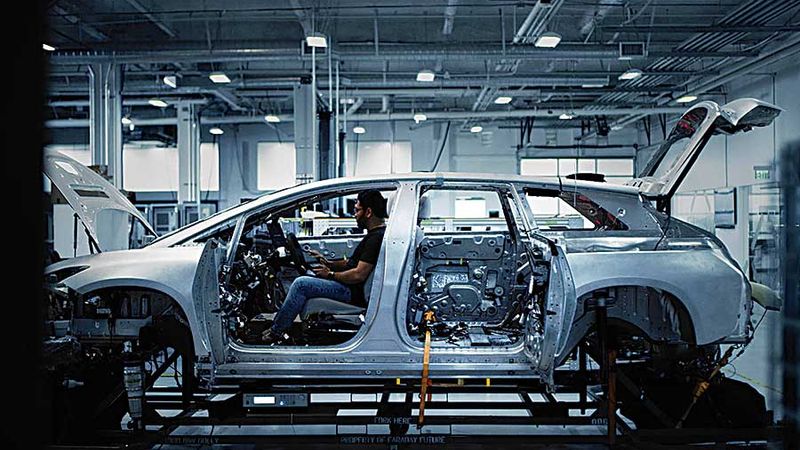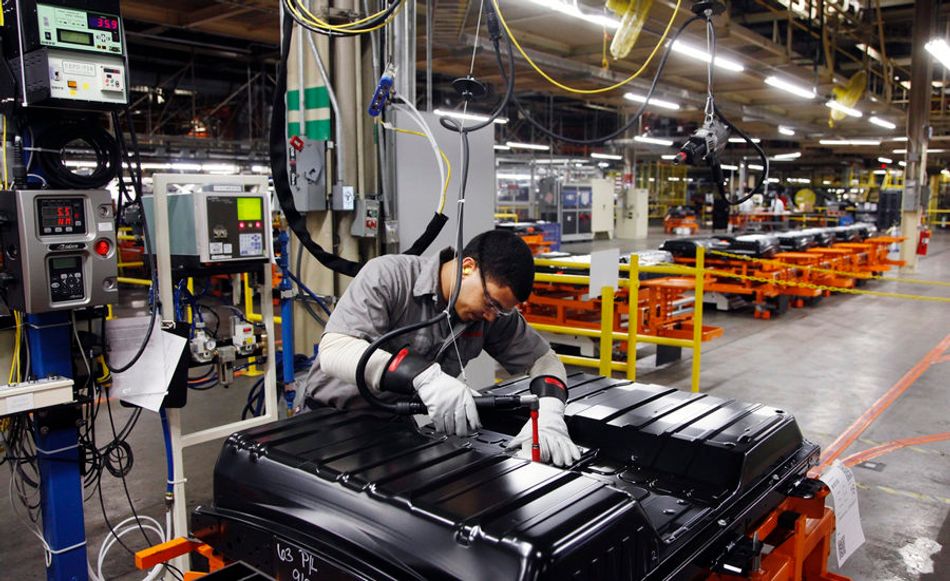Scaling Electric Vehicle Production Requires Advanced Battery Formation and Test Systems
Article 5 of our Energy Storage Series: Reducing cost is during the final stages of battery manufacturing can assist the migration to electric vehicles.

Farady Futures
This is the fifth article in a 5-part series (GOOD) exploring Energy Storage Systems (ESS). The series will provide insight into emerging technologies, covering topics including battery manufacturing, testing, and application.
The articles were originally published in an e-magazine, and have been substantially edited by Wevolver to update them and make them available on the Wevolver platform. This series is sponsored by Mouser, an online distributor of electronic components. Through their sponsorship, Mouser Electronics (GOOD) supports the growth of a sustainable future fuelled by renewable and distributed generation technologies.
Introduction
Driven by tighter CO2 regulations and more eco-conscious consumers (BAD), the pace of migration to electric vehicles continues to accelerate. This is despite the high cost of the batteries, which stubbornly remain approximately half of the vehicle's overall cost.
While many factors determine the cost of the battery, one area in which manufacturers can make significant headway in reducing cost is during the final stages of manufacturing. Specifically, during the battery formation and testing which can account for up to 20 percent of an EV’s battery cost.
Battery formation and testing is a time-consuming process involving multiple charges and discharges that activate a battery’s chemistry. It can take up to two full days. This necessary procedure readies the battery for use and is critical to ensure its reliability and quality. Because of how slow the process is, it is a significant bottleneck that prevents battery manufacturing from achieving greater throughput, which would lower the overall cost to produce batteries. Partnerships between EV battery manufacturers and suppliers with formation and test systems expertise are allowing them to increase their attention to reducing the time and cost involved at this crucial stage of manufacturing while still maintaining the precision required for advanced battery chemistries.

Faster Throughput Equals Lower Battery Cost
To decrease the cost of batteries, manufacturers need to take a holistic approach that starts by leveraging suppliers’ system-level expertise to reduce the overall battery test circuit footprint while increasing the number of channels. It’s important to note that both must be done while maintaining the accuracy, precision, reliability, and speed of their battery formation and test measurements to ensure safety, performance, and reliability requirements are met.
This is not easy to do. For the front end, the power supplies driving the battery charging circuits need to be tightly controlled. Going deeper, battery formation (BAD) and testing requires close monitoring of current and voltage profiles used during battery cycling to prevent overcharging and undercharging. This ensures safety during tests, while also maximizing battery longevity, which greatly lowers overall cost of ownership for the end user.
For these critical battery measurements, very high-quality instrumentation amplifiers (in-amps) and associated shunt resistors are needed to measure battery charge/discharge current to better than ±0.05% accuracy, even under harsh factory conditions. The same level of accuracy applies to the difference amplifiers used to monitor the voltage over the entire thermal operational range.
There are several ways to incorporate these components into a full solution, but it is a significant challenge to maximize performance and minimize the system footprint. ADI trys to combat this with the integration of the analog front end, power control, and monitoring circuits in a single IC, the AD8452 (GOOD). These ICs can include battery reversal prevention, overvoltage protection switches, and smart controls to prevent overcharge of batteries, and they can reduce the system footprint by 50 percent. This suite of capabilities allows battery manufacturers to incorporate more capabilities into test systems that will simultaneously make more efficient use of factory floor space. Moreover, they allow manufacturers to design systems with more functionality and more robust testing procedures.
Efficient power conversion is another opportunity to drive further system performance. By using advanced switching architectures, test systems can minimize power consumption by enabling bidirectional energy exchange with the grid. Efficient power conversion also reduces the need for heat management equipment, which can add to the system’s overall cost and power consumption. The net result is a reduction in wasted energy and manufacturing cost. Enabling these capabilities requires an appreciation of system features, such as isolated gate drivers, that support the faster switching needs of newer silicon carbide and gallium nitride power switching technologies.
The benefits of working closely with suppliers who have system-level expertise and a broad portfolio of products goes beyond having access to more sophisticated components and building blocks. It also gives battery manufacturers access to reference designs for system architectures that can be more easily adopted, making time to market three to four times faster than if a battery manufacturer were to develop a formation and test system from scratch.
Conclusion
The global demand for EVs will increase at a Compound Annual Growth Rate of 21 percent out to 20211. The need for close partnerships between battery manufacturers and suppliers couldn’t be greater. Suppliers need to provide reliable, proven solutions that enable manufacturers’ systems to achieve new levels of efficiency. The best suppliers can help manufacturers bring these new capabilities to market even faster, and the results will allow battery and electric vehicle production to flourish.
This article was originally written by Vikas Choudhary for Mouser and substantially edited by the Wevolver team. It's the final article of a 5-part series exploring Energy Storage Systems (ESS). Future articles will explore Communication Solutions for Essential Monitoring of Solar PV and Energy storage, electric vehicle production futures, and battery monitoring systems for lithium-ion solutions.
Article one (GOOD) outlined the Energy Storage Systems in healthcare applications.
Article two (GOOD) explained communication systems for energy storage.
Article three (GOOD) gave an overview of battery stack monitoring systems for li-on batteries.
Article four (GOOD) provided a deep analysis of the critical design considerations in estimating the state of lithium-ion batteries.
About the sponsor: Mouser
Mouser Electronics is a worldwide leading authorized distributor of semiconductors and electronic components for over 800 industry-leading manufacturers. They specialize in the rapid introduction of new products and technologies for design engineers and buyers. Their extensive product offering includes semiconductors, interconnects, passives, and electromechanical components.
 References
References

1 Electric Vehicle Market by Propulsion (BEV, PHEV, FCEV), Vehicle (PC,CV), Charging Station (Normal, Super, Inductive), Charging Infrastructure(Normal, Type-2-AC, CHAdeMO, CCS, Tesla SC), Power Output, Installation,and Region—Global Forecast to 2025. (GOOD) MarketsandMarkets, June 2018